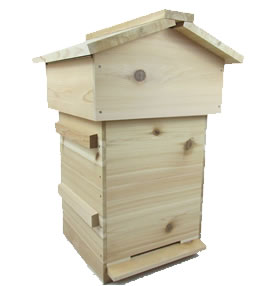Beehive Foundation: Importance and Types of Foundation for Beekeeping
A beehive foundation plays a crucial role in modern beekeeping by providing a base for honeycomb construction within hive frames. Foundation serves as a guide for bees to build their comb, ensuring straight, uniform cells for brood rearing and honey storage. Understanding the importance of beehive foundation and the different types available is essential for beekeepers to support healthy bee colonies and maximize honey production.
Importance of Beehive Foundation
The foundation serves several important purposes in beekeeping:
- Supports Comb Construction: Foundation provides bees with a stable base to build comb, helping them to create straight, uniform cells for brood rearing and honey storage.
- Prevents Cross-Comb: Properly installed foundation helps prevent bees from building comb in unwanted directions, reducing the risk of cross-comb and making hive inspections easier.
- Guides Bee Behavior: Foundation with pre-printed hexagonal cells guides bees' natural comb-building behavior, encouraging them to build comb in a structured and efficient manner.
- Increases Honey Production: Foundation encourages bees to build comb in frames, maximizing hive space and honey production potential for beekeepers.
Types of Beehive Foundation
There are several types of beehive foundation commonly used in beekeeping:
- Beeswax Foundation: Traditional foundation made from pure beeswax, which bees readily accept and use for comb construction. Beeswax foundation is preferred by many beekeepers for its natural scent and acceptance by bees.
- Plastic Foundation: Foundation made from plastic sheets with pre-printed hexagonal cells. Plastic foundation is durable and long-lasting, but some beekeepers prefer beeswax foundation for its natural qualities.
- Wire Foundation: Foundation reinforced with wire for added strength and stability. Wire foundation is commonly used in combination with beeswax or plastic foundation to prevent sagging and ensure straight comb construction.
- Comb Foundation: Foundation made from a combination of beeswax and plastic, offering the benefits of both materials. Comb foundation combines the natural scent and acceptance of beeswax with the durability of plastic.
Choosing the Right Beehive Foundation
When choosing beehive foundation, beekeepers should consider factors such as bee preferences, hive management practices, and personal preferences. Some beekeepers prefer beeswax foundation for its natural qualities, while others opt for plastic or wire foundation for added durability and stability.
Ultimately, the choice of foundation depends on individual beekeeping goals and preferences. Experimenting with different types of foundation can help beekeepers find the best option for their hives and support healthy bee colonies.
Conclusion
In conclusion, beehive foundation is a vital component of modern beekeeping, providing bees with a base for comb construction and supporting healthy hive development. Understanding the importance of foundation and the different types available allows beekeepers to make informed decisions and effectively manage their hives.
Whether you prefer beeswax, plastic, wire, or comb foundation, choosing the right foundation for your hives is essential for maximizing honey production, supporting bee health, and ensuring the success of your beekeeping endeavors.



